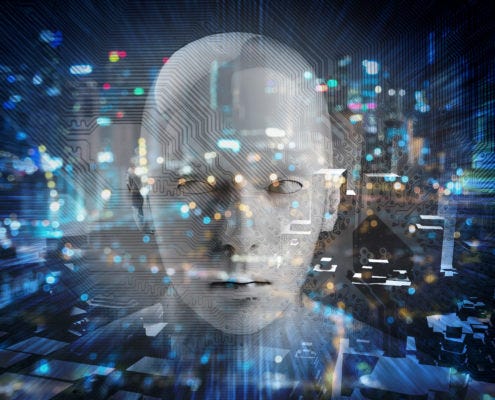
If we are looking for traffic spikes to detect an attack, how do we know it’s actually an attack and not simply a busy time for the business? Maybe our business is experiencing the result of a successful marketing campaign that had pushed more buyers to our website. On the flip side, maybe the hacker is using a low and slow attack on a backend server that takes out that service, but never creates a large enough traffic spike to detect an issue. The answer is that traditional detection methods (rate-based) will not offer you certainty in dealing with next-generation DDoS issues. When you rate-limit traffic you are blocking some good traffic from reaching its destination, and you are allowing some bad traffic into your network. Yes, you stay up, but your users may still experience some discomfort. Traditional devices are not able to discriminate bad from good so anything over a certain threshold gets dropped. These devices lack specificity. Why would I not keep all of my good traffic and simply drop the bad?

Artificial intelligence has great potential in the realm of economics and business. It not only relieves workers from having to do repetitive or even dangerous tasks, it is also much faster in analyzing data volumes, making decisions based on this, and completing tasks. What’s more, robots will further automate production, which will open many new doors. For example, countries such as Germany will become a more attractive production location, thus increasing its competitiveness. There will no longer be any economic reasons for outsourcing production to low-wage countries. Whole new business areas will emerge as a result of AI joining up with connected products, processes and machines. AI is developing more and more into a disruptive core technology. It will revolutionize our working lives and current software applications! Just like humans, machines are also capable of making mistakes. As long as human health, life and death are not at stake or people are not being assessed, mistakes are acceptable. Using a percentage tolerance level, we humans will define probabilities which allow us to decide if a computation is correct.
Machines Teaching Each Other Could Be the Biggest Exponential Trend
Intelligent systems, like those powered by the latest round of machine learning software, aren’t just getting smarter: they’re getting smarter faster. Understanding the rate at which these systems develop can be a particularly challenging part of navigating technological change. Ray Kurzweil has written extensively on the gaps in human understanding between what he calls the “intuitive linear” view of technological change and the “exponential” rate of change now taking place. Almost two decades after writing the influential essay on what he calls “The Law of Accelerating Returns”—a theory of evolutionary change concerned with the speed at which systems improve over time—connected devices are now sharing knowledge between themselves, escalating the speed at which they improve. “I think that this is perhaps the biggest exponential trend in AI,” said Hod Lipson, professor of mechanical engineering and data science at Columbia University, in a recent interview.
Artificial Intelligence : The Potential For Better Corporate Governance

With banks in emerging markets with strong ties to US investments, investors and regulators are interested in these ratings. "Corruption and the erosion of trust in many of these countries are among the biggest challenges banks face doing business there” said Ms Haddad. "Risk is evolving and credit risk only gives you part of the picture. Risk associated with counterparty illicit finance and conduct risk is equally – if not more – important for companies operating in complex markets. For most responsible boards we talk to, it's a top three issue" said Mr Jones, Sigma CEO. "What is unique about the Sigma Ratings team is that they saw a growing problem from inside the corridors of government and international development finance, and found an innovative way to marry their unique knowledge with cutting-edge technology," said Gareth Jones, Managing Partner at FinTech Collective. "We are excited to partner with Sigma Ratings as it changes how financial institutions around the world consume and apply risk information to conduct business" he added, describing the launch as "a game changer in today's environment where illicit finance is directly related to issues of economic development and national security."
What the Incident Responders Saw
Close to 60% of attacks involve lateral movement, or where the attacker travels from its initial victim machine to other machines in a targeted organization. PowerShell is one of the most popular tools for moving about the victim's network: 100% of IR pros say they've seen the Microsoft Windows automation and configuration management tool employed by attackers, and 84% see Windows Management Interface (WMI) as a key tool weaponized by attackers. This so-called "living off the land" approach of running legitimate tools to remain under the radar is classic behavior of persistent hacker teams such as nation-states. Some 54% of IR pros say legit operating system applications like these are being abused by attackers. In addition, 16% have spotted attackers running Dropbox to assist in their movements. "The uptick of WMI is concerning," notes Kellermann, as well as the use of process-hollowing and unsigned digital certificates. "It speaks to the level of sophistication [being used] to colonize that infrastructure."
Chaos is needed to keep us smart with Machine Learning

The “relative noise reduction” paradigm of AI is reducing the outliers that you see in your interactions with the technology. However, the noise that you don’t see is somehow reducing your frontiers. As a data scientist, I am happy to see my algorithm achieve high accuracy to predict, to recommend well and to self-correct. But these algorithms learn from what they see, exactly or partially bearing resemblance to the history. They do not and cannot propose things my brain would propose in exploratory process without any proof of obvious interest from history. And that brings us to a “side effect” of AI- the unconscious trimming of creativity. I have my interest to watch astronomy related documentaries, and google, Facebook, Instagram, YouTube, LinkedIn and even Pinterest seems to be aware of this. However, somehow, a chain reaction has triggered that takes me to a gazillion resources around astronomy. How are we allowing the users of the AI-powered technology to broaden their horizons by showing them something absolutely out of the blue once in a while? How are we ensuring that the power of human nature and ability to learn is embedded in the recommendations we design?
Hyper-Localization Is Key To FinTech Expansion
“Some of the major investments we’re doing is localizing our services and opening offices worldwide to cater our value prop to the local businesses. A Chinese exporter’s needs are different than the needs of exporters in other areas of Asia, for example,” she says. The company has partnered with Chinese giants WeChat Pay and AliPay to try to increase acceptance rates in Western countries through Chinese mobile wallets. In this partnership, Chinese consumers who are traveling abroad and would like to purchase a good in store or online can pay using their Chinese mobile wallet and it will be accepted in the international store they are trying to buy from. They also made waves in 2016 with their Rakuten partnership. Payoneer’s first major client was Getty Images back in 2007, which used their services to pay photographers around the globe. As their early clients have grown into major companies, Payoneer has grown up with them. “We’ve constantly delivered more services to address their needs. We also became more licensed and more regulated, which gave us more credibility for a small business back then,” says Levy
How Artificial Intelligence will Transform IT Operations and DevOps

While Artificial Intelligence (AI) used to be the buzzword a few decades ago, it is now being commonly applied across different industries for a diverse range of purposes. Combining big data, AI, and human domain knowledge, technologists and scientists have become able to create astounding breakthroughs and opportunities, which used to be possible in science fiction novels and movies only. As IT operations become agile and dynamic, they are also getting immensely complex. The human mind is no longer capable of keeping up with the velocity, volume, and variety of Big Data streaming through daily operations, making AI a powerful and essential tool for optimizing the analyzing and decision-making processes. AI helps in filling the gaps between humans and Big Data, giving them the required operational intelligence and speed to significantly waive off the burden of troubleshooting and real-time decision-making. ... To identify that single log entry putting cracks in the environment and crashing your applications, wouldn’t it be easy if you just knew what kind of error you are looking for to filter your log data?
The future of banking

The technology that ties decentralized and open banking together is the blockchain. With the blockchain accelerating the potential to realize the benefits of these approaches to banking, the industry is touting the blockchain as the key to a future where banking is more accessible. Open and decentralized banking is enabling companies like HSBC to work with startups like R3 to put the blockchain to the test. Projects like WeTrust, Kiva, and OPTIX are working on blockchain-based solutions to address specific issues in money management, lending, and personal finance. ... The goal is to make existing online services more accessible through blockchain technology. For the unbanked, this means being able to get a loan, send remittance, or cover medical expenses just with their smartphone or walking over to their local neighborhood store. This is “universal”: decentralizing these services to make them within reach for anyone who needs them. Imagine a world where it doesn’t matter if you’re from Nigeria or Bangladesh, from the city or a small town.
Digital transformation in logistics: Delmar begins tech overhaul

The Rackspace agreement represents a shift in IT strategy for the transportation and logistics firm. "We have always taken the approach that we have to own everything," said Ron McIntyre, CTO at Delmar. But the task of managing hardware, software and data globally -- Montreal-based Delmar has operations in North America, Asia and Latin America -- became difficult. And McIntyre said the company's existing infrastructure isn't scalable enough to react quickly to business events such as an acquisition or a new market venture. The Rackspace managed services deal is part of a modernization journey in which Delmar aims to position itself to become "much more competitive and efficient within our marketplace" in the next few years, McIntyre said. In that marketplace, established providers such as Delmar face challenges from startups and emerging technologies -- hence the need for digital transformation in logistics. "There are startups around the Uber model in terms of matching shippers with carriers," McIntyre said. "That is where the push is coming from."
Quote for the day:
"Don't waste your time with explanations: people only hear what they want to hear." -- Paulo Coelho
No comments:
Post a Comment